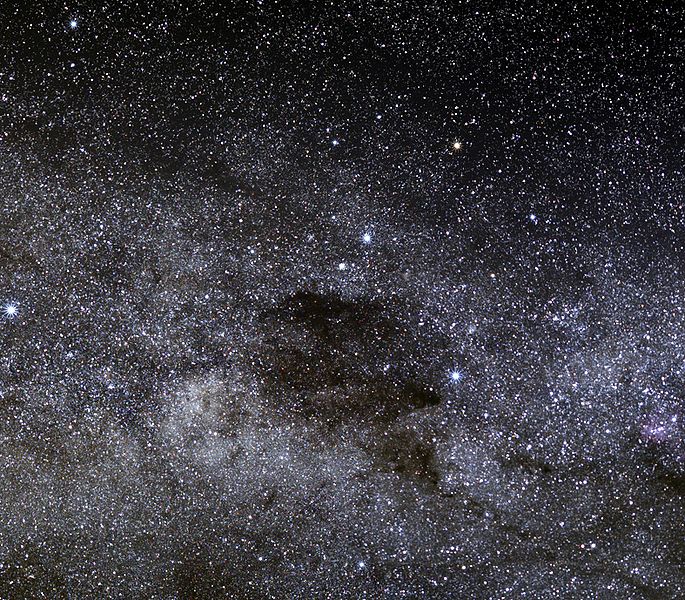Súbor:Coalsack-ESO-B06.jpg

Veľkosť tohto náhľadu: 685 × 600 pixelov. Iné rozlíšenia: 274 × 240 pixelov | 548 × 480 pixelov | 877 × 768 pixelov | 1 170 × 1 024 pixelov | 1 574 × 1 378 pixelov .
Pôvodný súbor (1 574 × 1 378 pixelov, veľkosť súboru: 1,22 MB, MIME typ: image/jpeg)
História súboru
Po kliknutí na dátum/čas uvidíte ako súbor vyzeral vtedy.
| Dátum/Čas | Náhľad | Rozmery | Používateľ | Komentár | |
|---|---|---|---|---|---|
| aktuálna | 16:58, 21. november 2009 |  | 1 574 × 1 378 (1,22 MB) | Fabian RRRR | {{Information |Description={{en|1=The Coalsack is one of the most prominent dark nebulae visible to the unaided eye. A beautiful sight in the southern sky, the Coalsack casts a dark silhouette against the Milky Way’s bright stripe of stars. The Coalsack |
Použitie súboru
Na tento súbor odkazujú nasledujúce 2 stránky:
Globálne využitie súborov
Nasledovné ďalšie wiki používajú tento súbor:
- Použitie na de.wikipedia.org
- Použitie na el.wikipedia.org
- Použitie na en.wikipedia.org
- Použitie na fi.wikipedia.org
- Použitie na fr.wikipedia.org
- Použitie na ja.wikipedia.org
- Použitie na pl.wikipedia.org
- Použitie na ru.wikipedia.org
- Použitie na simple.wikipedia.org
- Použitie na sv.wikipedia.org
- Použitie na tl.wikipedia.org

